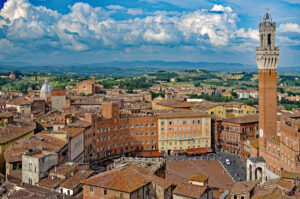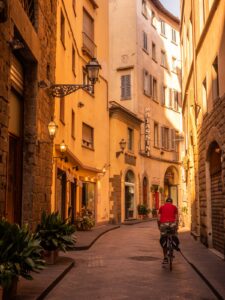Last Updated on November 22, 2025 by Emma Fajcz | Published: August 16, 2022
If Tuscany in general is well-loved by foodies (and we can agree it is), one can argue that Florence is the region’s pièce de résistance. But with so many options the question remains – what to eat in Florence?
From Florentine staples to classics from other Tuscan towns, we share our top picks of what to eat in Florence. On this list, you’ll find dishes that may not find in other Italian cities. So you won’t find pizza on this list, or at least the classic Neapolitan version of it.

Gelato
Life is short, as they say, so let’s start with the best desserts in Florence.
Gelato is absolutely not unique to Florence (or even Italy) anymore, but its origin story does involve a prominent family in Florentine history. During the 16th century, the mighty Medici family was the first to sample something akin to what we think is gelato today.
Sadly, there’s an abundance of bad gelato these days, so when you’re in the mood for a cono, look for shops with metal gelato containers that aren’t piled high with fluorescent-colored gelato. Natural colors usually mean natural flavor, and when the bins aren’t over-filled, it usually means gelato is made on the premises.
Here are some of our favorite Florence gelaterie—and, if you’d like to broaden your dessert horizons, there’s an astonishing number of gelato flavors to try.
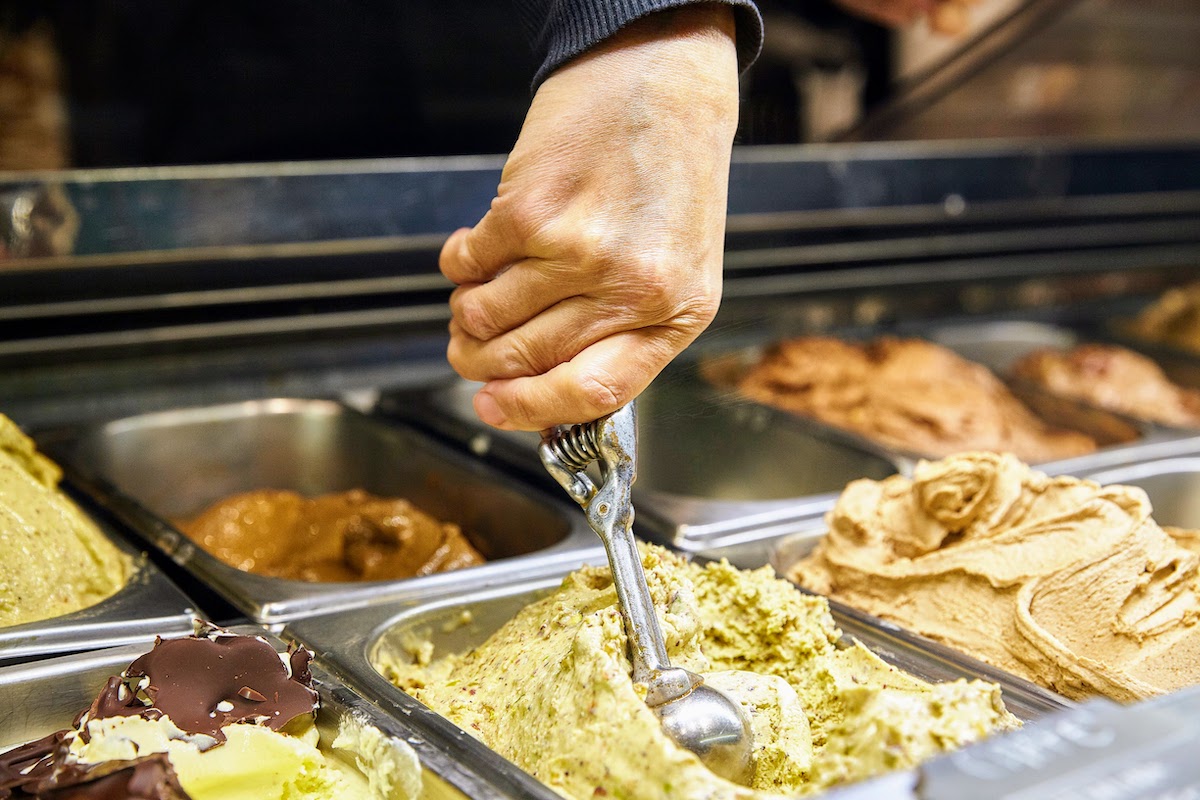
Cantucci
You may not know the word cantucci, but chances are good you’ve had something similar: biscotti. The latter means “twice-cooked,” and it’s an umbrella term for any cookie that gets baked twice. The former is a twice-baked cookie that comes from the Tuscan town of Prato. They’re lightly sweet and usually studded with almonds.
Rather than a snack eaten with coffee, cantucci are served on the saucer of a glass of vin santo, a sweet dessert wine. Dip the cookies like the locals do to soften them before munching.
Tuscan Bread
To be honest, Tuscan bread is a bit of an acquired taste, if you’re eating it on its own. The salt-free loaves are a little bland and get stale more quickly. This, however, is what makes them perfect for some favorite Tuscan dishes.
- Ribollita is a classic cucina povera recipe that uses stale bread chunks to thicken a bean-and-kale soup. It’s Tuscan comfort food at its finest.
- Panzanella is a summer version of mixing bread chunks with veggies to create a heartier meal. Fresh tomatoes and basil leaves are tossed with bread and, sometimes, chunks of red onions.
- Pappa al pomodoro is another soup that uses Tuscan bread. But here it tends to dissolve more. It turns a tomato broth into a thick tomato soup (that may also be served cold).
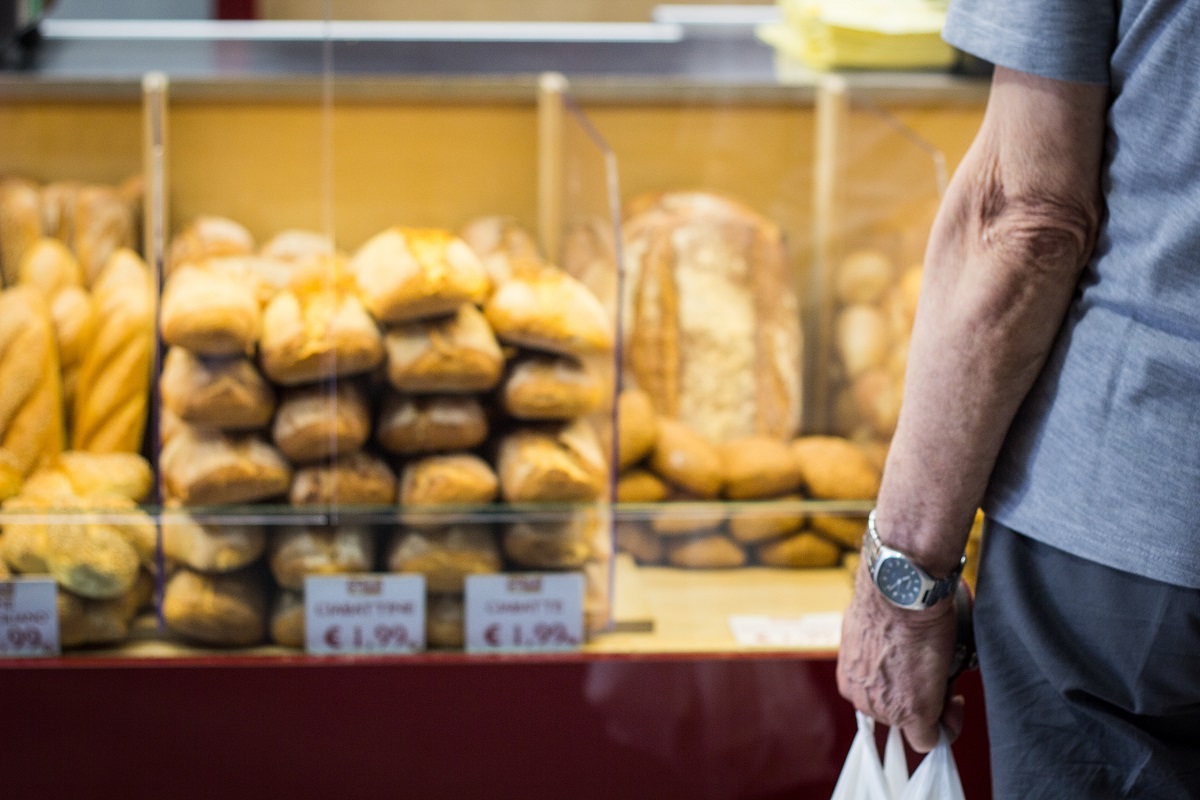
Bistecca alla Fiorentina
Carnivores visiting Tuscany tend to come armed with the name bistecca alla fiorentina. This famous steak is, traditionally, a thickly cut T-bone from a specific breed of Tuscan cattle. It’s meant to be grilled without seasoning, getting a scant sprinkle of salt just before it’s plated. And it always comes rare. An order of bistecca will serve at least two or three people, so bring some friends.
Offal
A common feature of peasant cooking around the world is using the bits that the upper classes discard. In Italian cucina povera (poor man’s cooking) frequently means offal—all the organs that the nobility wasn’t eating, like liver, kidney, brain, stomach, as well as eyes, and tongue. And in Florence, there are a few common offal recipes to look for.
- Lampredotto is made by simmering one of a cow’s four stomachs in a well-seasoned broth. It’s typically served as a sandwich. Pieces of the meat are stuffed into a split bread roll with a bit of salsa verde and some of the tasty broth, and it’s a favorite local street food snack.
- Trippa alla fiorentina is the lining of another one of a cow’s stomachs (tripe, or trippa) cooked in a rich tomato sauce.
- Crostini di fegatini are slices of toasted Tuscan bread smeared with a generous helping of chicken liver pate (that’s the fegatini). They’re usually served as an appetizer or an aperitivo morsel.
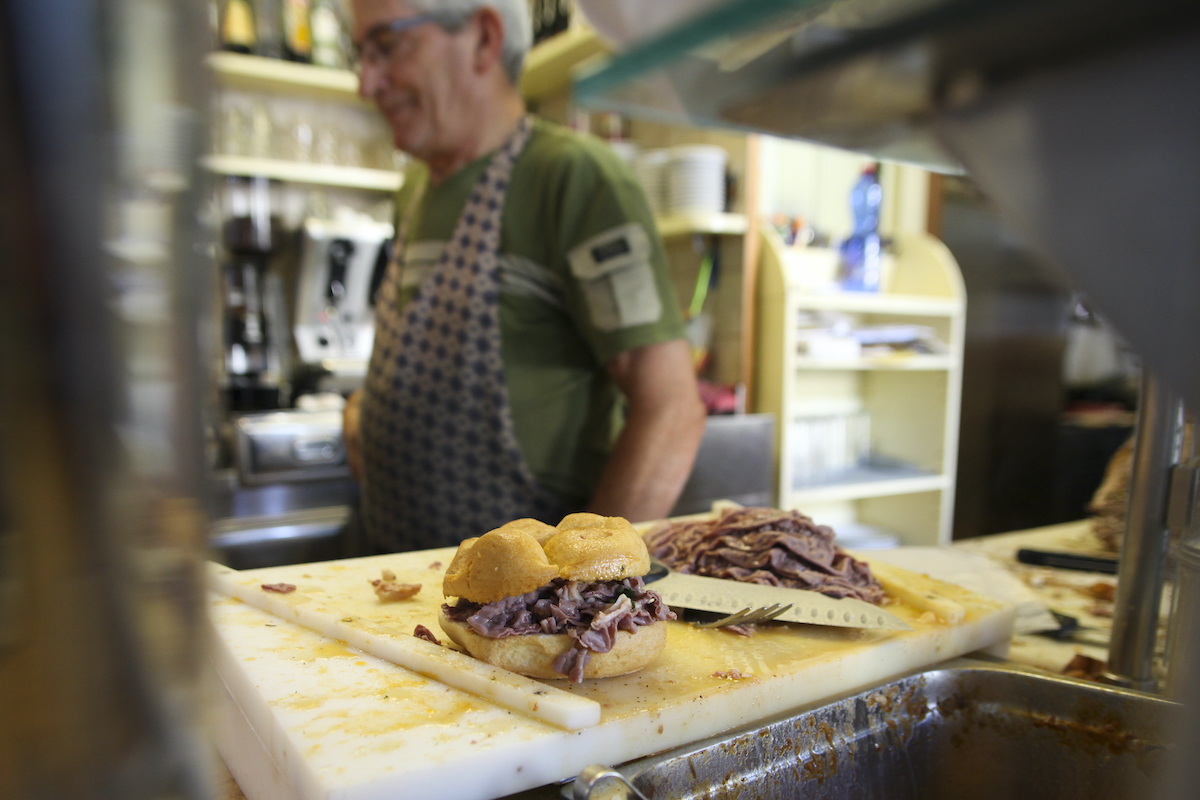
Pasta
Pasta is not traditionally a Tuscan staple, but there are a few pasta shapes and dishes that are more common in Tuscan than elsewhere.
- Pappardelle is the most popular pasta in the region. It’s an egg pasta that’s usually paired with rich meat sauces like wild boar (cinghiale) or wild hare (lepre).
- Pici is a cucina povera pasta, in that it’s made with only flour, water, and salt, leaving out the most expensive ingredient—eggs. A common pici dish further underlines the peasant cooking origins of the pasta. Pici alle bricole is a sauce of breadcrumbs that have been lightly toasted with garlic and olive oil.
- On the other end of the expenditure spectrum is something many foodies wouldn’t dream of missing. That’s a pasta dish topped with a few slivers of Tuscan truffles!

Schiacciata
Now, while we warned you that there wouldn’t be pizza on this list, this final entry (half of it, anyway) is sometimes called Florence’s version of pizza.
Schiacciata actually takes two forms in Florence, which is a little confusing. The first one, which is called simply schiacciata, is a flat bread that’s been doused with generous helpings of olive oil and salt. If you think it sounds like focaccia, you’re not far off. It can be eaten on its own, cut into narrow strips, or used for sandwiches. Sometimes it’s topped with olives, and during the grape harvest season, you may also see it baked with grapes (schiacciata all’uva).
Schiacciata dolce, on the other hand, is a cake that used to only get made during Carnevale. These days, you may see it outside the festive season, as well. The cake gets its yellow color from saffron, and it’s covered with a light dusting of powdered sugar.
One of the truest pleasures for any food lover in Italy is how a dish can feel both familiar and completely new. The generic brand of “Italian food” is, after all, a global phenomenon—we all know what pasta and pizza are. What’s magical about exploring Italy through its cuisine, however, is learning about the intense regionality of ingredients and recipes. And that means every empty plate is a possible introduction to your new favorite flavor. Now go discover!
If you want to try delicious local specialties—and get a heavy dose of history, too—join our Florence food and wine tour. You’ll learn even more history of Florentine fare while sampling some of the city’s best dishes!


